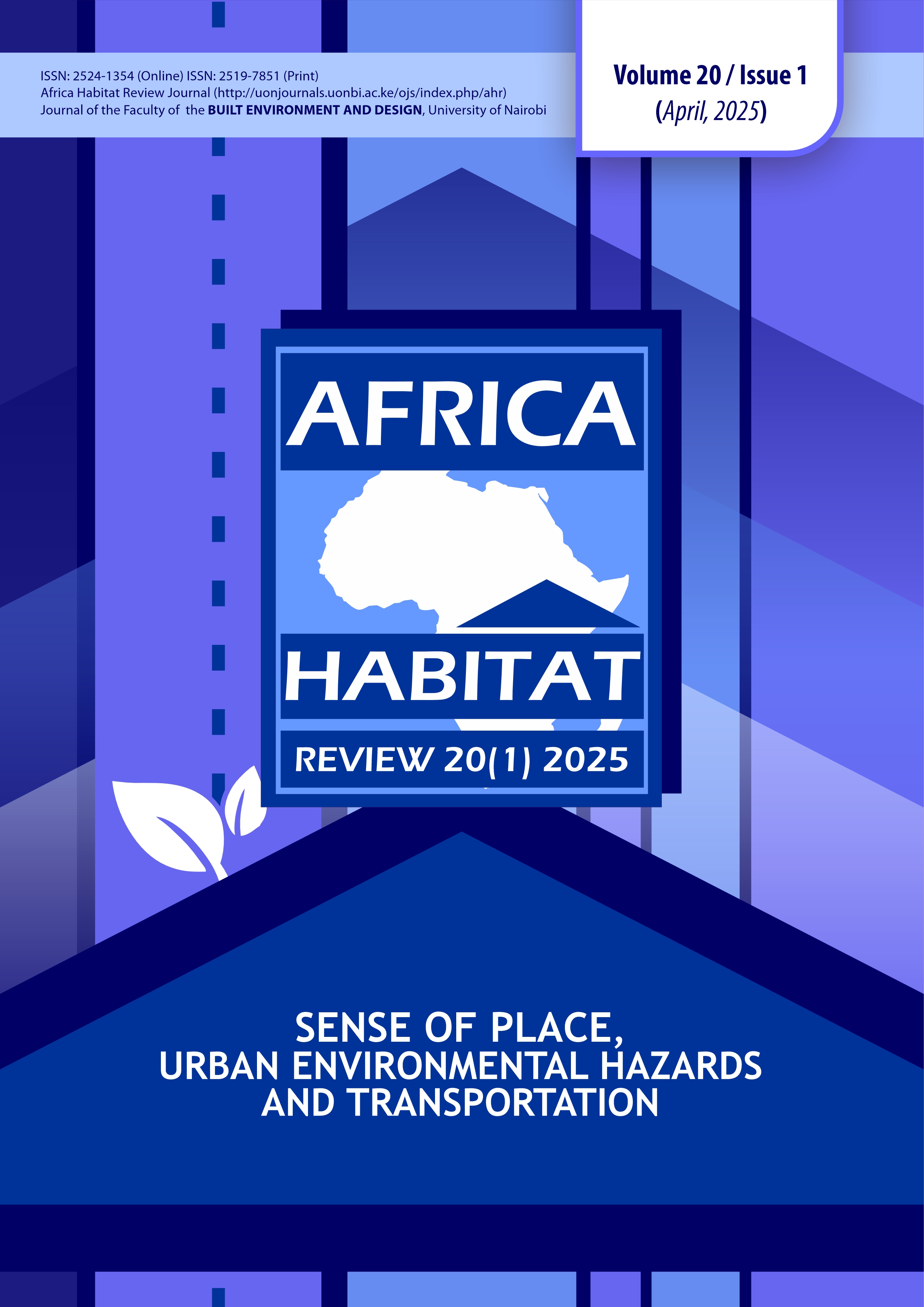Transformation of Vernacular Housing and its Effects on Indoor Thermal Comfort
A Case Study in a Tropical Coastal Village in Kenya
Abstract
A study at the tropical coast of Kenya was undertaken in March, May and July 2024 to assess the effect of transformation of building envelop design of vernacular dwelling houses on the indoor thermal comfort. In three case study houses in Kilifi County, indoor air temperature, relative humidity, mean radiant temperature and air speed measures were taken using data loggers. The rectangular house type with mud walls and palm leaf thatch roof was found to have the lowest thermal discomfort with a daily mean of 3.0oCHrs. The preceding traditional rounded oblong shaped house of grass thatch covering and the subsequent contemporary brick wall and metal sheet roof had higher mean thermal discomfort levels of 8.2oCHrs and 7.5oCHrs, respectively. Using linear correlation between indoor operative temperature and outside air temperature, thermal discomfort levels were predicted for the whole year and in the future considering climate change. Indoor thermal discomfort was predicted to increase by up to 90 % when surface air temperatures increase by 1oC. It is recommended that as vernacular houses undergo building envelop design transformation, vaulted insulated ceilings and high-level permanent vents be used to reduce indoor thermal discomfort.


